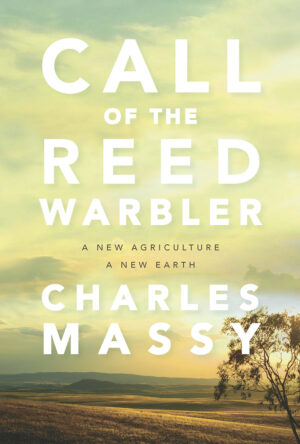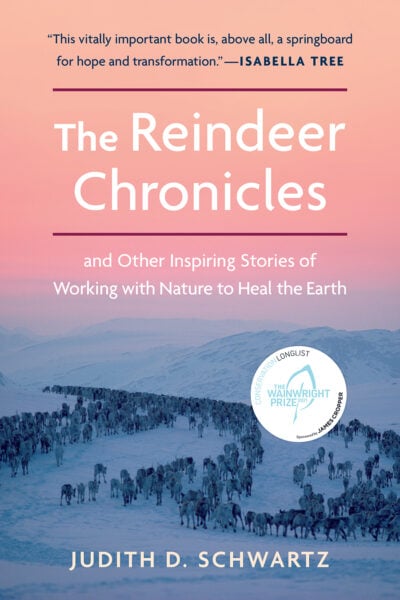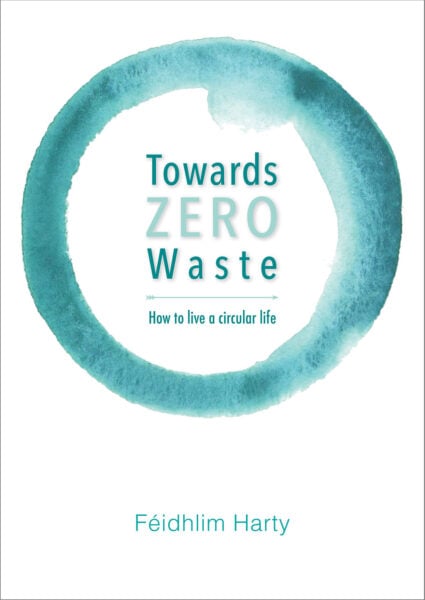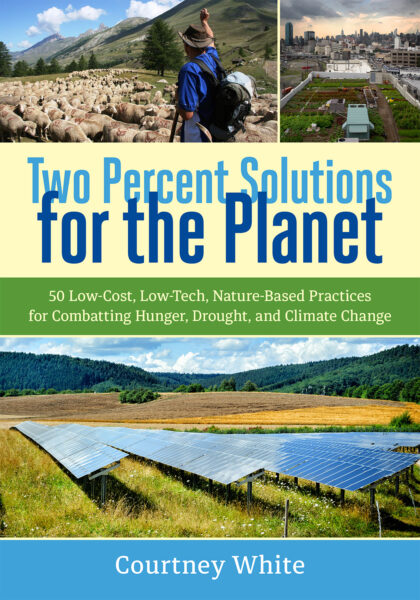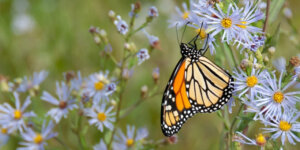Inheriting the Earth
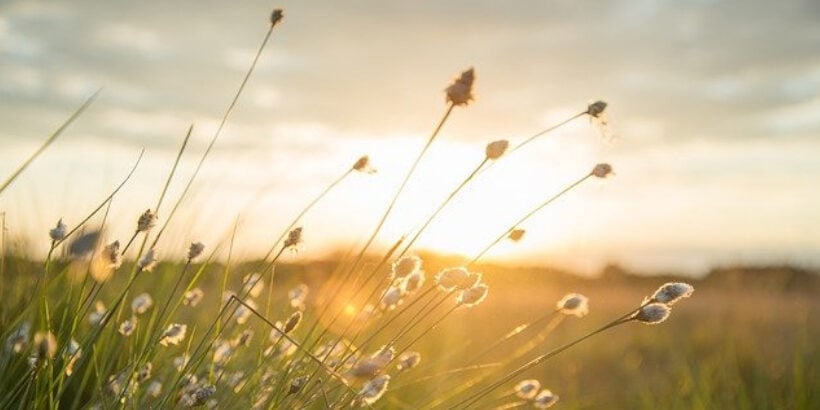
Farmland covers 38 percent of the land area of the Earth and is a major contributor to climate change. But it doesn’t have to be this way. Soil and plants have the capacity to store huge amounts of carbon in the ground, thus how we grow food can be one of the key solutions to our climate crisis.
Visionary farmer and educator Charles Massy argues that an ecologically and socially enhancing agriculture—known as regenerative agriculture—can reverse these harmful carbon emissions by working with nature rather than against it to increase biodiversity, enrich soils, improve watersheds, and strengthen ecosystems.
In this excerpt from his book, author Charles Massy writes about his epiphany about the importance of his farm’s underlying ecology. It has been adapted for the web.
“This is a story for our story-loving species at this most critical of all moments in its entire time on Earth.” —CHARLES MASSY
When my father suffered a major heart attack, I made the decision at the age of twenty-two to return home, take over the farm and finish university part-time. Thus began a forty-year land-management journey. On returning home, I continue developing my interest in birds, mammals and other creatures. However, at the same time I seemed to live a schizoid life. I was quite ignorant about the rest of the insect world, not to mention the arthropod and underground microbial world. In fact, concerning the latter, invisible world, I lived as if it didn’t exist.
Yet this underground component constituted ninety percent of life on the farm. Even more alarming was my ignorance about the vastly more obvious plant world: the very system on which our farming landscape was founded.
Yes, I knew most of the exotic trees and a gum tree or two, and I knew most of our introduced exotic pastures, but I could barely name more than one or two native grasses beyond the most obvious one called ‘corkscrew’ (Austrostipa scabra),and this mainly because corkscrew’s seed penetrated both sheep’s skin and woolen socks just before Christmas.
That is, when it came to farming, I had somehow compartmentalised my keen interest in nature to consider only a few obvious and attractive components. To the rest, I was effectively blind.
Then, one day after a decade or so of management, I was confronted by this blindness. I remember setting off mustering on a horse, my two kelpie sheep dogs trotting behind as we meandered along a two-wheel track through open granite country. This country had once been grassy woodland, and would then have comprised a dominant but scattered canopy of snow gum, candle bark and ribbon gum, plus large blackwood hickories; a scattering of understorey shrubs and forbs; and then diverse native grassland. After earlier phases of clearing, ringbarking, and then more recently set-stocked grazing, all that remained on this day as I mustered were a few dead grey stumps and the odd silver wattle or hickory surviving high up between granite tors and out of the reach of sheep and cattle.
So it was, therefore, puzzling that, as I rode along, I suddenly noticed the strong, sweet smell of what I was convinced was snow-gum blossom. I stopped the horse and looked around, but there wasn’t a snow gum in sight. Intrigued, I circled the horse in a wide arc. Still no snow gums, but the strong blossom scent seemed to come from near a clump of rocks. The only living thing, which partly covered these boulders, was a nondescript dark-green bush that I had barely taken account of previously.
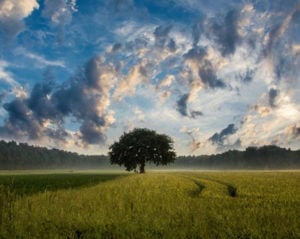 Dismounting, I walked over to the bush. It was perhaps a metre high and shaped like a dome, while roughly circular and around two to three metres in diameter. It was entirely covered in rigid thorns, which were surrounded and interlaced by very small green leaves, perhaps the size of a small pea. Later on, I would learn that the combination of thorns and small leaves was an adaptive defence by some plants to grazing in landscapes. Dating back possibly millions of years, the plants and grazing animals (in this case, mainly kangaroos, wallabies, potoroos and so on)had co-evolved.
Dismounting, I walked over to the bush. It was perhaps a metre high and shaped like a dome, while roughly circular and around two to three metres in diameter. It was entirely covered in rigid thorns, which were surrounded and interlaced by very small green leaves, perhaps the size of a small pea. Later on, I would learn that the combination of thorns and small leaves was an adaptive defence by some plants to grazing in landscapes. Dating back possibly millions of years, the plants and grazing animals (in this case, mainly kangaroos, wallabies, potoroos and so on)had co-evolved.
But at that moment, I was intrigued by this nondescript bush because when I bent down, I discovered that it was the source of the overpowering honey-blossom scent. And yes, there, of the most delicate size and shape, were a myriad of little, bell-like pale-yellow flowers hanging upside down within their protective screen of thorns. Clearly the strong, rich honey scent had a purpose, because surrounding the flowers were small native bees, flies, and bright-orange parasitic wasps.
On looking up my reference books, I quickly discovered this nondescript plant was called a tree violet (Hymenantheradentata), otherwise known locally as a gruggly bush. But I did not recognise its importance to an ecosystem nor what its strong scent and attendant insects implied for ecological function. I had been blind to this bush, and it would take time for the blindfold to be fully removed. But I have never forgotten that day, and for me our gruggly bushes are emblematic both of what was lost and also of what could be.
As I travelled further on my journey of ecological literacy, I came to realise the significance of ‘gruggly’ and a myriad of species like it in the vast range of ecosystems across our continent. It is the ‘un-seen’ elements such as gruggly bushes and blackthorn shrubs that provide vital food for animals and insects in a functioning ecosystem. And, suddenly and unbidden, those radical words from the Gospel of Matthew came to mind: Blessed are the meek, for they will inherit the earth.
Recommended Reads
Agri-Culture: Source of a Healthy Culture, Society and Mother Earth
Recent Articles
For too long, bugs have had a negative connotation associated with them. But what if we took the time to observe the benefits of insects? It’s time to rebug our gardens, lawns, and parks! The following is an excerpt from Rebugging the Planet by Vicki Hird. It has been adapted for the web. Adding Bugs:…
Read MoreAsparagus is a delicious vegetable with a layered history. How did this aspiring spear make its way from growing in the wild to appearing on our plates? The following is an excerpt from the The Seed Detective by Adam Alexander. It has been adapted for the web. “Nature gives us the key to every secret…
Read MoreInterested in growing trees? Here are some tips on successfully planting, transplanting, and pruning trees to create a flourishing forest garden! The following is an excerpt from The Home-Scale Forest Garden by Dani Baker. It has been adapted for the web. Planting Potted Trees and Shrubs If you order potted trees, check with your supplier to…
Read MoreChances are, you’ve seen cattails growing on the edge of your local lake or stream at least once or twice. Instead of just passing these plants, try foraging for and cooking them to create delicious seasonal dishes! The following excerpt is from The New Wildcrafted Cuisine by Pascal Baudar. It has been adapted for the…
Read MoreWith the right strategies and practices, composting on a small farm is surprisingly easy and inexpensive. Just follow these steps for making compost, and your farm will be thriving in no time! The following excerpt is from The Lean Farm Guide to Growing Vegetables by Ben Hartman. It has been adapted for the web. (All photographs by Ben…
Read More

